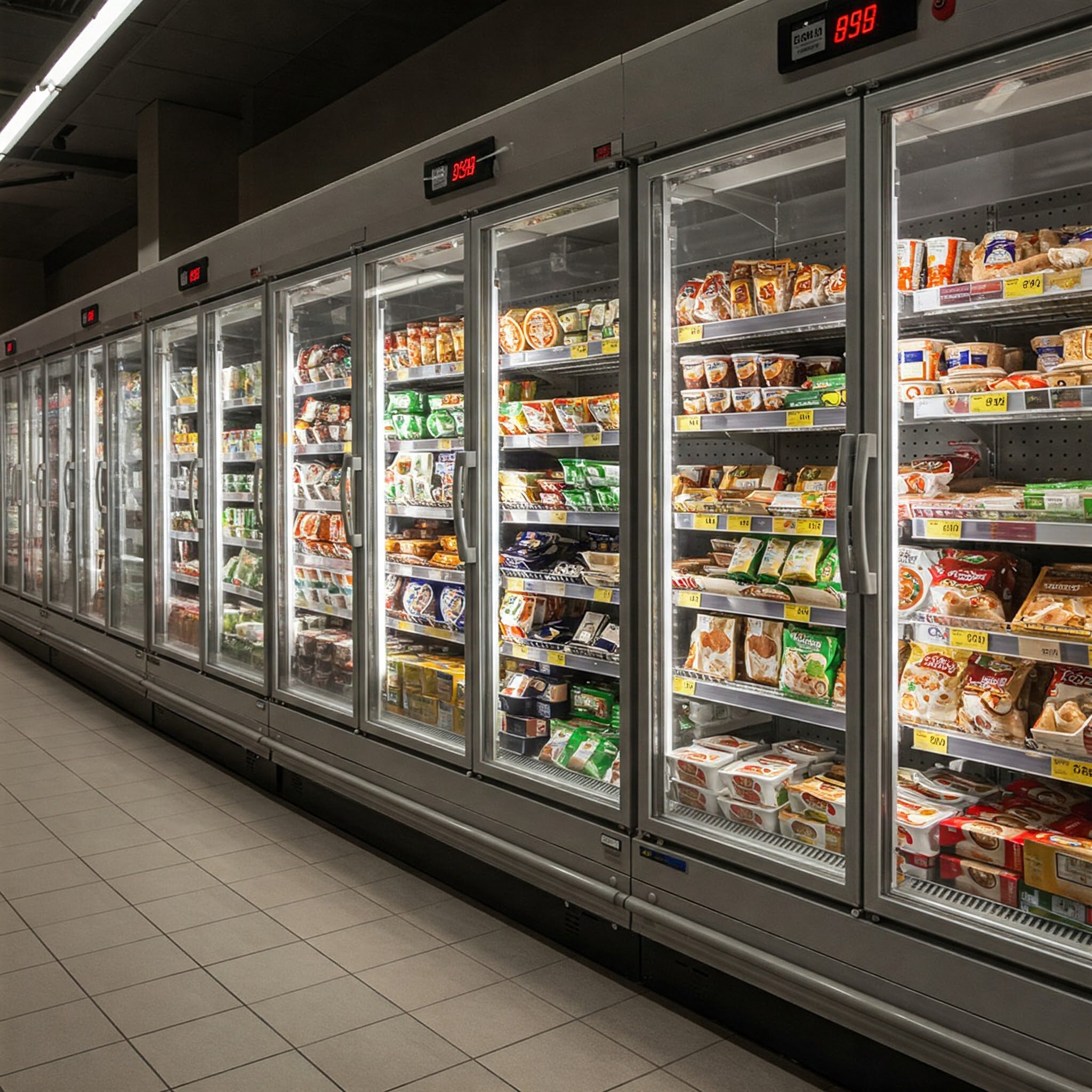Display Freezers: Preserving Frozen Goods with Style
Display freezers are essential in the retail and hospitality industries, offering a perfect blend of functionality and aesthetics. They are designed to preserve frozen goods while showcasing them in a way that attracts customers. Whether it’s frozen meals, ice cream, or specialty items, display freezers play a pivotal role in ensuring product quality and boosting sales.
What Are Display Freezers?
Display freezers are refrigeration units with transparent glass doors or lids, designed to maintain sub-zero temperatures while providing maximum visibility of the contents inside. They are commonly used in supermarkets, convenience stores, ice cream parlors, and restaurants to store and display frozen products.
Types of Display Freezers
1. Upright Display Freezers
- Description: Vertical units with multiple shelves and glass doors.
- Best For: Supermarkets, grocery stores, and convenience stores.
- Example Items: Frozen meals, vegetables, seafood, and desserts.
- Advantages:
- Space-saving design.
- Easy product organization.
2. Chest Display Freezers
- Description: Horizontal units with sliding or hinged glass lids.
- Best For: Bulk storage or self-service in retail spaces.
- Example Items: Ice cream tubs, frozen pizzas, and bulk frozen food packages.
- Advantages:
- Large storage capacity.
- Ideal for bulk items.
3. Countertop Display Freezers
- Description: Compact freezers designed for placement on countertops.
- Best For: Small businesses, cafes, or kiosks.
- Example Items: Ice cream cups, frozen desserts, and specialty frozen drinks.
- Advantages:
- Space-efficient.
- Easy accessibility.
4. Open Display Freezers
- Description: Freezers without doors, designed for grab-and-go convenience.
- Best For: High-traffic retail areas.
- Example Items: Frozen snacks, meals, or desserts.
- Advantages:
- Quick customer access.
- Enhanced impulse purchases.
5. Glass-Top Freezers
- Description: Freezers with transparent glass lids for clear visibility.
- Best For: Ice cream shops and supermarkets.
- Example Items: Popsicles, ice cream, and frozen treats.
- Advantages:
- Clear product display.
- Easy-to-clean design.
Key Features of Display Freezers
- Glass Doors or Lids
- Made of durable, anti-fog tempered glass for clear visibility.
- Adjustable Shelving
- Flexible shelving to accommodate various product sizes.
- LED Lighting
- Bright, energy-efficient lights that enhance product visibility.
- Temperature Control
- Adjustable thermostats to maintain freezing temperatures, typically ranging from -18°C to -25°C (-0.4°F to -13°F).
- Frost-Free Technology
- Reduces ice buildup for easier maintenance and consistent cooling.
- Energy Efficiency
- Modern units often feature energy-saving compressors and insulation.
- Ventilation System
- Ensures even cooling across all shelves and compartments.
- Self-Closing Doors
- Prevents unnecessary temperature loss by ensuring doors close automatically.
Applications of Display Freezers
- Supermarkets and Grocery Stores: For frozen meals, vegetables, ice cream, and seafood.
- Ice Cream Parlors: For displaying ice cream tubs, popsicles, and gelato.
- Convenience Stores: For grab-and-go frozen snacks, desserts, and drinks.
- Cafes and Restaurants: For storing and showcasing frozen specialty items.
- Food Markets: For bulk frozen food items like meat and fish.
Benefits of Display Freezers
- Enhanced Product Presentation
- Transparent panels and LED lighting attract customer attention.
- Convenient Access
- Doors, lids, or open designs allow easy access to products.
- Preservation of Quality
- Maintains optimal temperatures to ensure freshness and prevent spoilage.
- Increased Sales Opportunities
- Attractive displays encourage impulse purchases.
- Versatility
- Can accommodate a wide range of frozen goods, from desserts to bulk items.
Maintenance Tips for Display Freezers
Daily Maintenance
- Clean Glass Panels: Use a soft, damp cloth with a mild cleaner to remove smudges and fingerprints.
- Organize Products: Avoid overloading to ensure proper airflow and cooling.
Weekly Maintenance
- Check Door Seals: Inspect gaskets for wear and tear to maintain a proper seal.
- Clean Interior Surfaces: Remove spills and debris to prevent odors or contamination.
Monthly Maintenance
- Defrost (If Needed): Remove ice buildup to ensure optimal performance.
- Clean Condenser Coils: Use a vacuum or brush to remove dust and dirt.
Seasonal Maintenance
- Inspect the Thermostat: Ensure the freezer is maintaining the correct temperature.
- Professional Servicing: Schedule a technician to inspect and service the refrigeration system.
Troubleshooting Common Issues
- Freezer Not Cooling Properly
- Cause: Dirty condenser coils or a faulty thermostat.
- Solution: Clean the coils and check thermostat settings.
- Excessive Frost Build-Up
- Cause: Frequent door openings or faulty door seals.
- Solution: Defrost manually and replace damaged gaskets.
- Condensation on Glass
- Cause: High humidity or damaged seals.
- Solution: Reduce humidity levels and inspect door seals.
- Noisy Operation
- Cause: Loose components or compressor issues.
- Solution: Tighten screws and consult a technician if needed.
- Water Leaks
- Cause: Clogged or frozen drainage system.
- Solution: Clear drainage pipes and ensure proper defrosting.
Choosing the Right Display Freezer
When selecting a display freezer, consider the following factors:
- Size and Capacity: Match the freezer to your space and product volume needs.
- Energy Efficiency: Opt for models with energy-saving features to reduce operating costs.
- Design and Layout: Choose a unit that complements your store’s aesthetics and provides easy access for customers.
- Temperature Range: Ensure the freezer meets the specific temperature needs of your products.
- Durability and Warranty: Look for a reputable brand that offers robust construction and warranty coverage.


